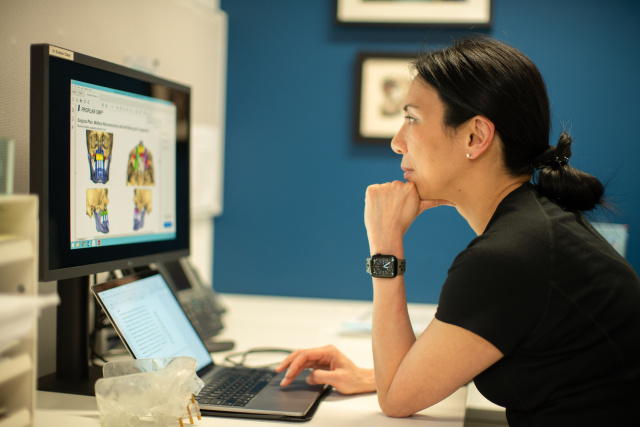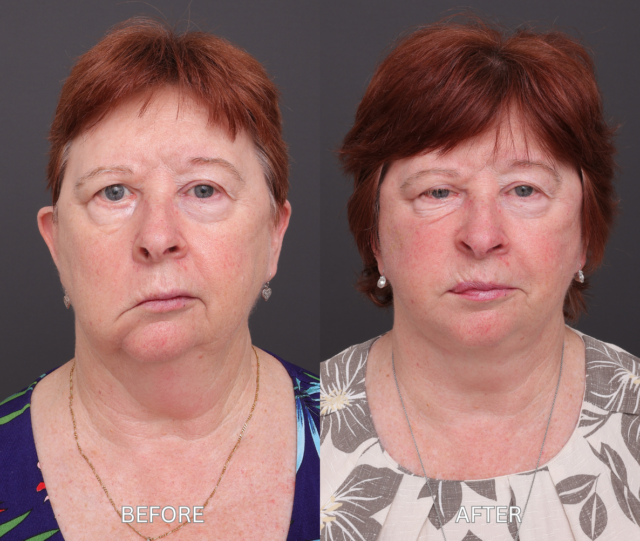Facial paralysis treatment
Facial palsy is muscle weakness or paralysis in the face due to damage or swelling of the facial nerve. One of the most common causes of facial paralysis includes Bell’s palsy, which is the unexplained and sudden onset of facial muscle weakness, with other causes ranging from cancer, trauma or a birth defect.

How does facial palsy occur?
Some individuals are born with facial nerve paralysis; others may develop the condition over time or due to illness, injury or surgery. Facial paralysis occurs when facial nerves become damaged or swollen, or the area in the brain that signals movement to facial muscles becomes damaged.
Facial nerve damage can be caused by:
Head injury
Middle ear infection
Brain condition, such as a stroke
Cancerous or non-cancerous head, neck, or brain tumour
Who is the right candidate for facial palsy treatment?
The surgeon will determine who is the right candidate for facial palsy treatment through assessing the individual’s medical history, undertaking a physical examination and, if necessary, referral to imaging and/ or physiological tests.
The physical examination may include facial movements, such as raising the eyebrows, smiling, frowning, and opening and closing the eyes. Tests for facial palsy treatment include magnetic resonance imaging (MRI), computed tomography (CT) scan, nerve conduction study (NCS) or electromyography (EMG).
From physical examination and test results, the surgeon will determine what the most suitable facial paralysis treatment option is for the individual’s unique case, which could include physiotherapy, surgical and non-surgical procedures.
How is facial palsy treated?
Facial palsy, also referred to as facial paralysis, can be treated using a range of techniques, including both non-surgical and surgical approaches.
Each treatment technique is designed to achieve different results — the best approach to treatment will depend on a patient’s specific condition, the progression of the patient’s condition over time and the functional and cosmetic aspects of the condition that bother the patient most.
Facial reanimation surgery offers effective treatment for facial paralysis, allowing individuals to regain control over their facial muscles for better movement and expressions. Alternatively, another muscle could be transplanted to the face to compensate for the loss of facial expression.
Dr Ch’ng works closely with patients and other medical specialists (including neurologists, neurosurgeons, ophthalmologists and/or otologists) to assess the extent of the facial palsy and highlight the most suitable facial paralysis treatment options. These may include:
- Botox (botulinum toxin, with or without dedicated facial physiotherapy)
- Brow and/or eyelid surgery
- Functional gracilis free flap reconstruction
- Nerve transfer
- Sling suspension
- Face lift
- Fat grafting.
What to expect post-facial reanimation surgery
As a facial palsy specialist, Dr Sydney Ch’ng carries out facial paralysis treatment in Sydney, and has treated patients from all over the country. Surgical procedures will be conducted under general anaesthetic in a fully accredited hospital and length of hospital stay may range from day only to a few nights of in-patient care. Most patients will have to take at least a week of leave from work to rest and heal from the procedure. Less invasive non-surgical treatments, e.g., botox injections, are usually carried out in the clinic. Patients may experience some swelling, bruising or sensations of numbness around the surgical area. These effects will subside naturally over time, and patients will be prescribed medicine to help mitigate discomfort.
Results from facial reanimation surgery can vary based on the type of procedure — but most patients will experience improvements in their ability to control their facial movements in the weeks following recovery, including closing and opening eyelids, lifting eyebrows, and smiling.
How facial reanimation surgery can help
Regain the ability to smile
Facial palsy commonly impacts the ability to smile, causing a great deal of frustration for affected individuals in everyday communication. Facial reanimation surgery can drastically improve the ability to smile and restore a more balanced appearance to those affected by facial palsy.
Better self-expression
The restoration of facial symmetry or simple facial movements from facial reanimation surgery can make a world of difference in how individuals express themselves and their emotions, allowing them to connect better with their loved ones and others around them.
More control over your facial movements or to reduce synkinesis
Facial paralysis treatment can give patients more autonomy over the different parts of their face, from lips to eyes. In some cases, where treatment is applied to address facial palsy affecting the mouth, patients may be able to improve the clarity of their speech and improve their ability to communicate.
Synkinesis, meaning “simultaneous movement”, is a condition where involuntary and undesirable facial movements occur in association with voluntary facial movements. One common example of synkinesis is when the eye closes whenever a patient smiles. Synkinesis not commonly develops in patients who have had Bell's palsy.

Right facial paralysis following acoustic neuroma resection; managed with deep plane face lift and right nerve to masseter to buccal nerve transfer. Right brow lift to follow.
Get in touch
If you’d like to know more about our head and neck, plastic or skin cancer surgical services, or if you have a question for Dr Ch’ng, we’d love to hear from you.
